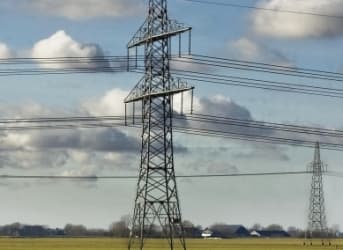Demand response technology is being touted as a way to help countries reduce energy usage without having to significantly change their behavior to reduce actual energy consumed usefully. The technology has been around for some time, but it is starting to gain more mainstream acceptance especially as part of the new Internet of Things (IOT) and smart grid movements.
The basic idea behind demand response is pretty simple: devices can monitor overall power use across the grid and then charge based on that use, so that consumers modify their behavior to shift energy usage to times when demand is lower (i.e. nonpeak times).
The program makes perfect sense in theory but implementing it has not always been easy. The rollout of smart meters in Britain for example has been a complete disaster by many accounts. The U.S. is a much larger country with a much wider variety of population densities and, as a result, any national rollout to consumers of demand response devices could be even harder. Things have not gone well in parts of the U.S. that have tried smart meter rollouts for instance, and there is little reason to think that a national program could be successfully implemented today. Related: The Media Is Wrong About The Fed
What is more feasible though is the classic American approach to technology improvements; build a great device that will save people and companies time or money, and then let the consumer install it on their own.
Demand response technology has never really taken off because it has not been sold to consumers in a way that clearly explains the benefits to them. Most consumers do not care enough about helping the environment to go out of their way and spend time and money upgrading a device. That’s why solar panels were slow to take off – that is, until Solar City (SCTY) and other firms were able to come up with a model that let consumers save money with very little work or upfront investment. Demand response devices are not as expensive as complete solar systems, but they still require an upfront expense and effort on the consumer’s part. Related: The Best Play In Solar Right Now
To make demand response equipment work well for consumers, companies that make the equipment, like Honeywell (HON), need to find a compelling way to sell it. A lease option is a possibility, but more likely, the technology needs to get to the point where it saves enough money for utilities that they choose to buy the devices and install them in consumer’s houses and businesses simply as a mechanism to increase profits.
That solution is not as far-fetched as it sounds. If a utility company were to install demand response devices in all of its customer locations, then it could monitor usage in real time and charge consumers accordingly. Consumers could use the devices to control their electrical usage based on the pricing and save money, while utilities could earn a higher profit from those that were willing to pay for energy needed at peak demand times. This type of arrangement would require a radical rethink by utility companies and, in many cases, by the state boards that regulate them. Related: China Could Prove To Be A Honey Trap For U.S. Investors
Honeywell is a leader in this space and has been demonstrating new products aimed at large power users. The firm’s reputation is stellar, and its market share makes it a clear domestic leader. For investors looking to leverage growth in the smart-grid and internet of things trends, the stock is an intriguing option.
If utilities do eventually rethink their business model around demand response technologies, Honeywell would be a major beneficiary. And even if utilities do not go this route, the firm may find another approach that advances both the smart grid and the firm’s profits forward in the future.
By Michael McDonald of Oilprice.com
ADVERTISEMENT
More Top Reads From Oilprice.com:
- Huge Increase In Quakes A Game-Changer For Oklahoma Oil & Gas
- Oil Markets Await Outcome Of Iran Talks
- U.S. Under Pressure To End Self-Imposed Oil “Sanctions”


















